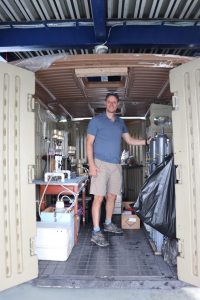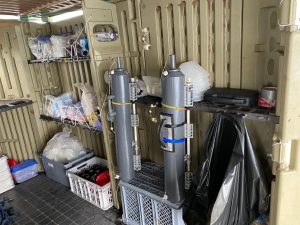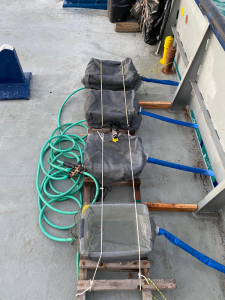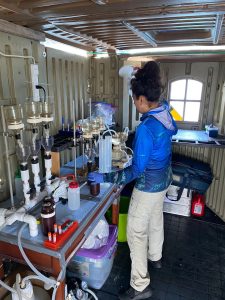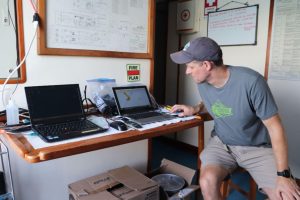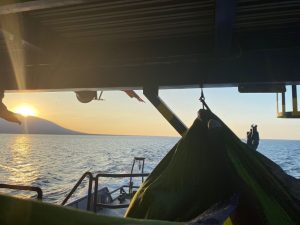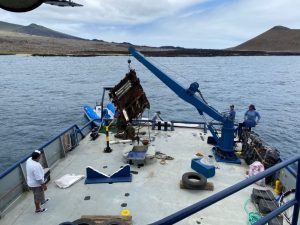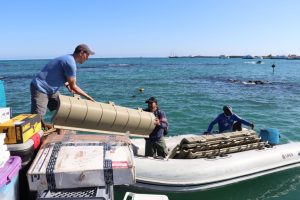In November 2022, a group of scientists embarked on a marine expedition to the Galapagos Islands to measure ocean conditions, the health of local wildlife like sea lions and marine iguanas, the impact of plastics on the environment, and more. Over the course of 16 days, the team traveled to 14 islands on the Sierra Negra ship. In this photo essay by Dr. Adrian Marchetti, take a behind the scenes look at their research adventure.
Greetings from the Galapagos! We were initially supposed to fly here a few days ago only to find out that there is an embargo on flying to Ecuador with more than two checked bags and any bags over 70 pounds. We tried to reorganize our gear to fit these limitations but could not get one of our most critical pieces of equipment under 70 pounds. It’s called a CTD and provides us with measurements of temperature, salinity, light, and fluorescence.
We went back to our lab in Chapel Hill to disassemble the CTD in order to make it conform to the weight limits along with reducing our gear. We ended up with two checked bags each under 70 pounds. We flew out a few days later and finally made it to the Galapagos!
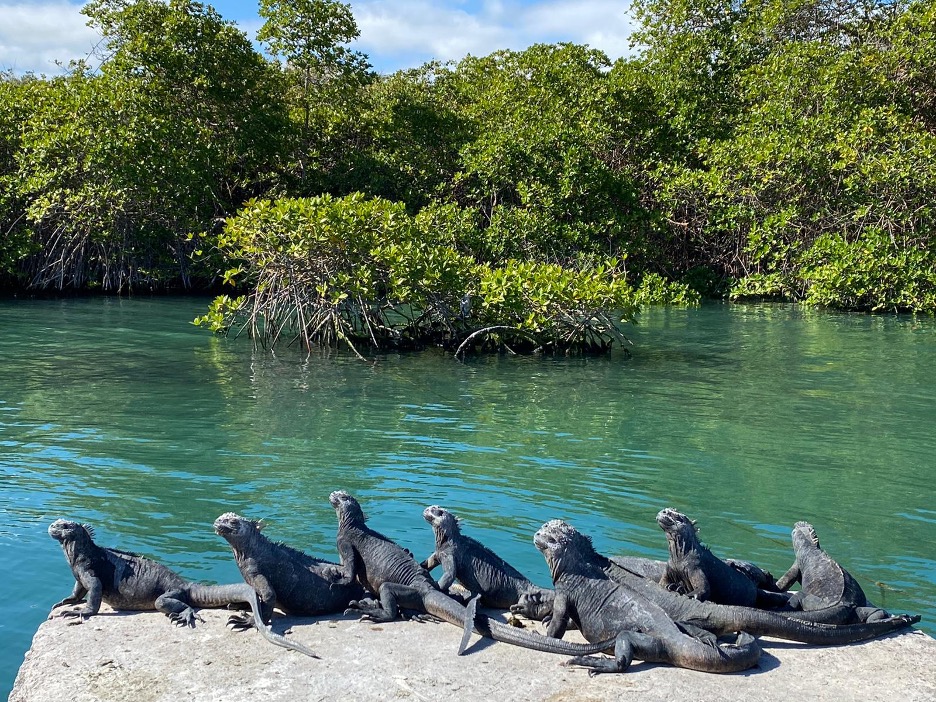
At the dock in Puerto Ayora on Santa Cruz Island where we put our gear onto a zodiac to then bring out to the ship that is anchored in the bay. There are many iguanas that like to sunbathe on the dock so you need to be careful where you step! Also see if you can spot the great blue heron in the mangrove bushes in the background.
Pre-cruise meeting at the Galapagos National Park (GNP) Headquarters where Chief Scientist Diego Paez-Rosas (USFQ) provided an overview of the cruise to the scientists and GNP staff.
This is the lab in which the majority of our samples are processed at sea. As there is limited space inside the Sierra Negra, our ship, we modified a plastic garden shed to become a state-of-the-art oceanographic lab. The window provides some of the best views of the islands!
This is the ship’s walk-in refrigerator at the start of the cruise. Plenty of fresh fruit and vegetables! One of my favorite parts of the cruise is the fresh juice we have with every meal…or at least until the fruit runs out.
These are Niskin bottles which are used to collect seawater from different depths in the ocean.
In order to measure primary productivity, we incubate water collected at different depths in on-deck incubators that have surface seawater flowing through them. The screens on these incubators mimic the light at the depths in which these samples were collected. Can you guess which incubator mimics the shallowest depth and which the deepest?
Cristina Vintimilla, Laboratories Manager at the GSC, is hard at work filtering samples following collection from a recent station.
On the cruise, we are continually mapping our location using a GPS so that we can link up our underway measurements with where they were collected.
Between stations I enjoyed spending time in a hammock I set up underneath the Sierra Negra’s helicopter deck. The view could not be beat!
Not all parts of the cruise are positive. Here, the Sierra Negra crew are retrieving an illegal fish-attraction-device (FAD) we came across in the ocean. Unfortunately, we came across many of these which makes me wonder how many there are in the reserve that we did not see.
At the end of the cruise, all our equipment needs to be transported back to the GSC for safe storage. This is accomplished through shuttling the equipment from the ship to land by a zodiac, including some really heavy equipment like the shed and the freezer!
The 2022 Galapagos Marine Research Expedition team after a very successful trip!
We did not miss a station and were even able to add a few. Seawater temperatures were colder than usual as the effects of the ongoing La Niña were obvious. We will return in March 2023 to process samples at the GSC and bring back the remaining samples at that time. For the time being, all samples are being safely stored at the GSC. The cruise was a great success!



